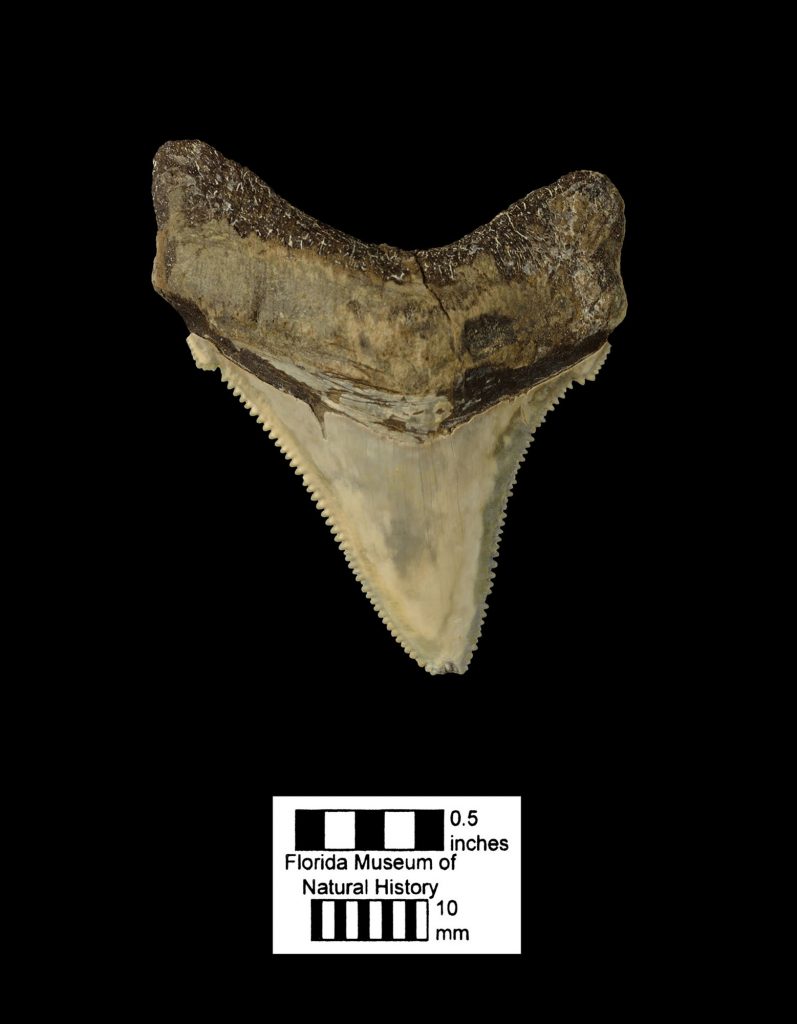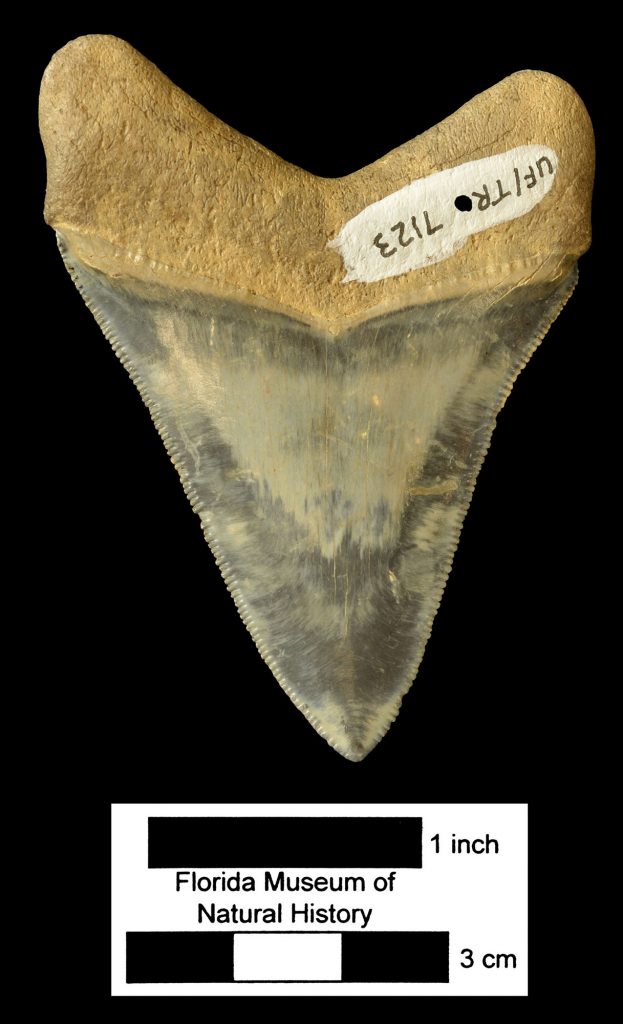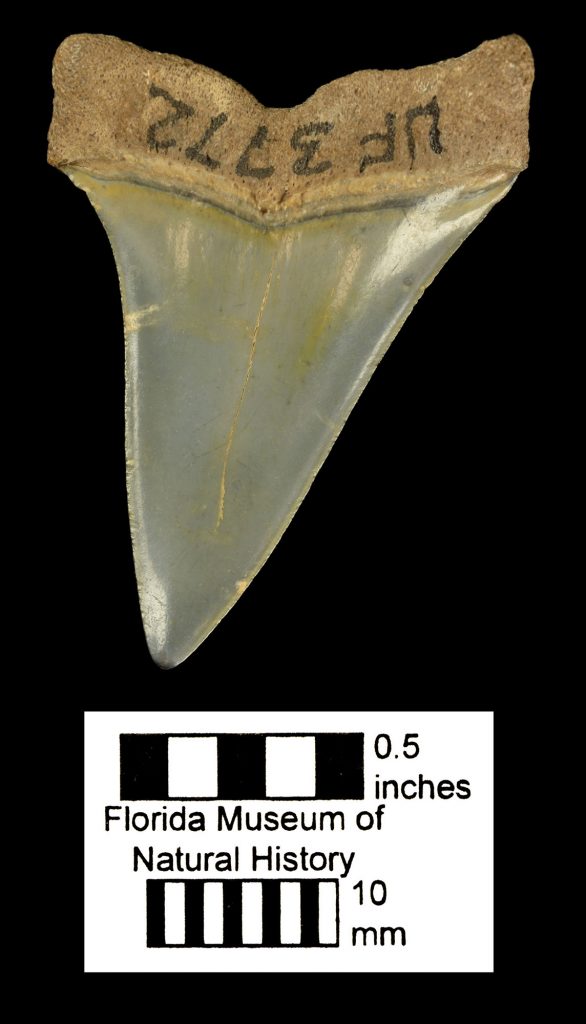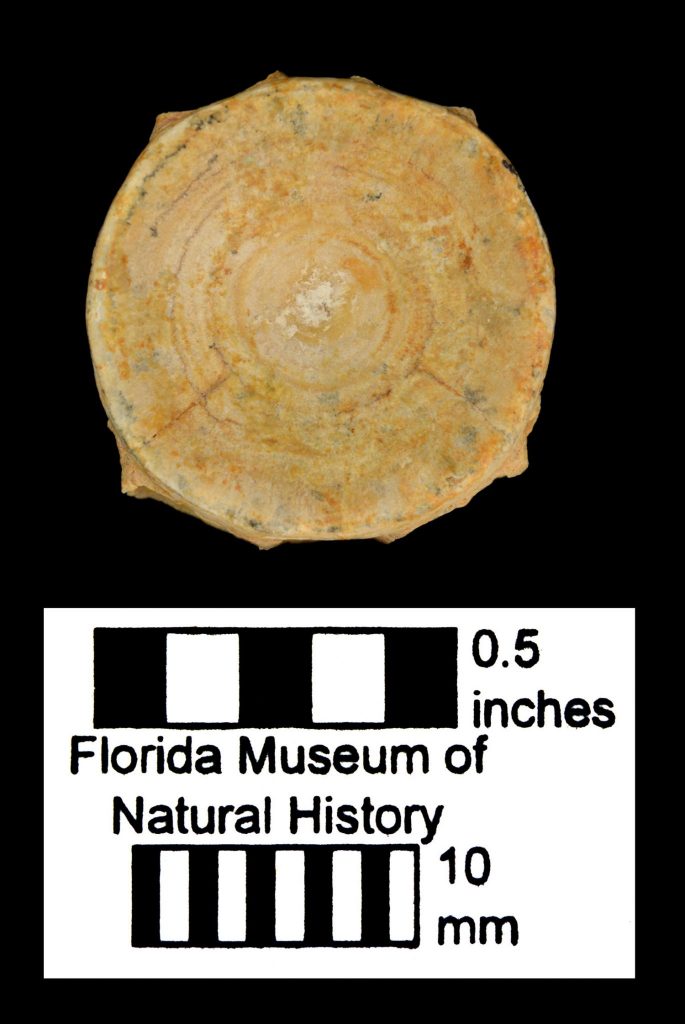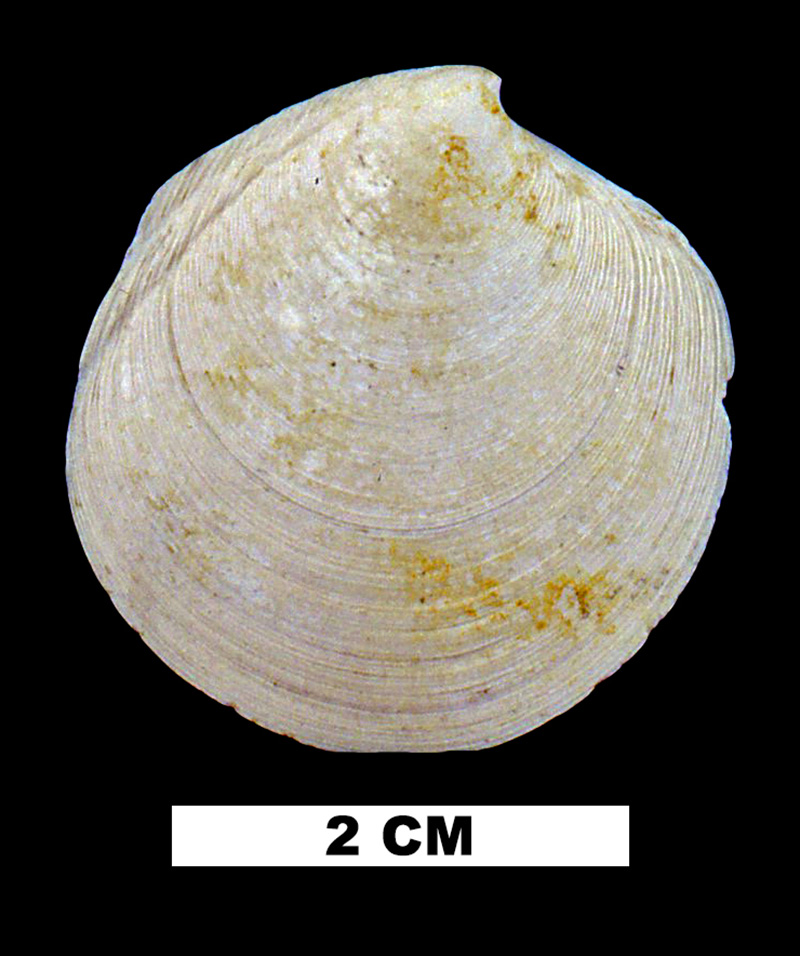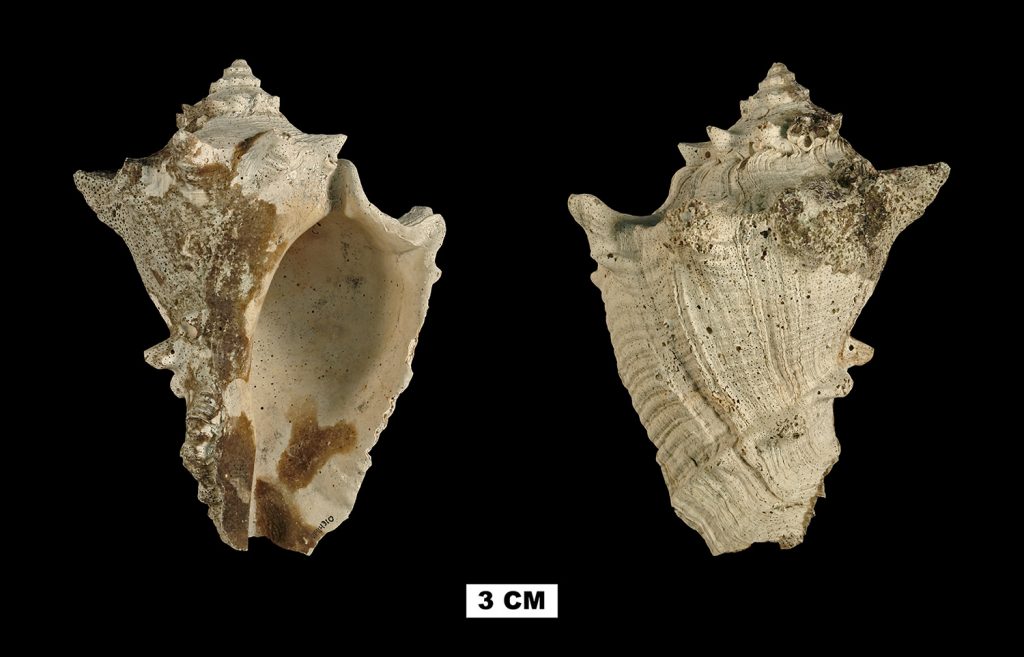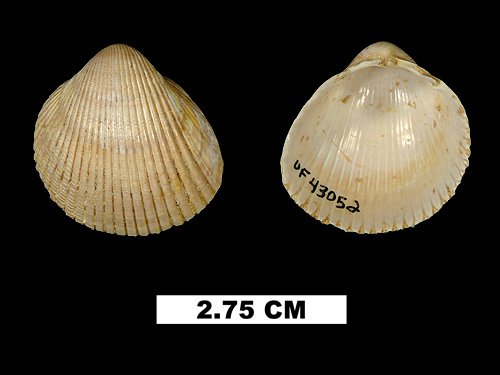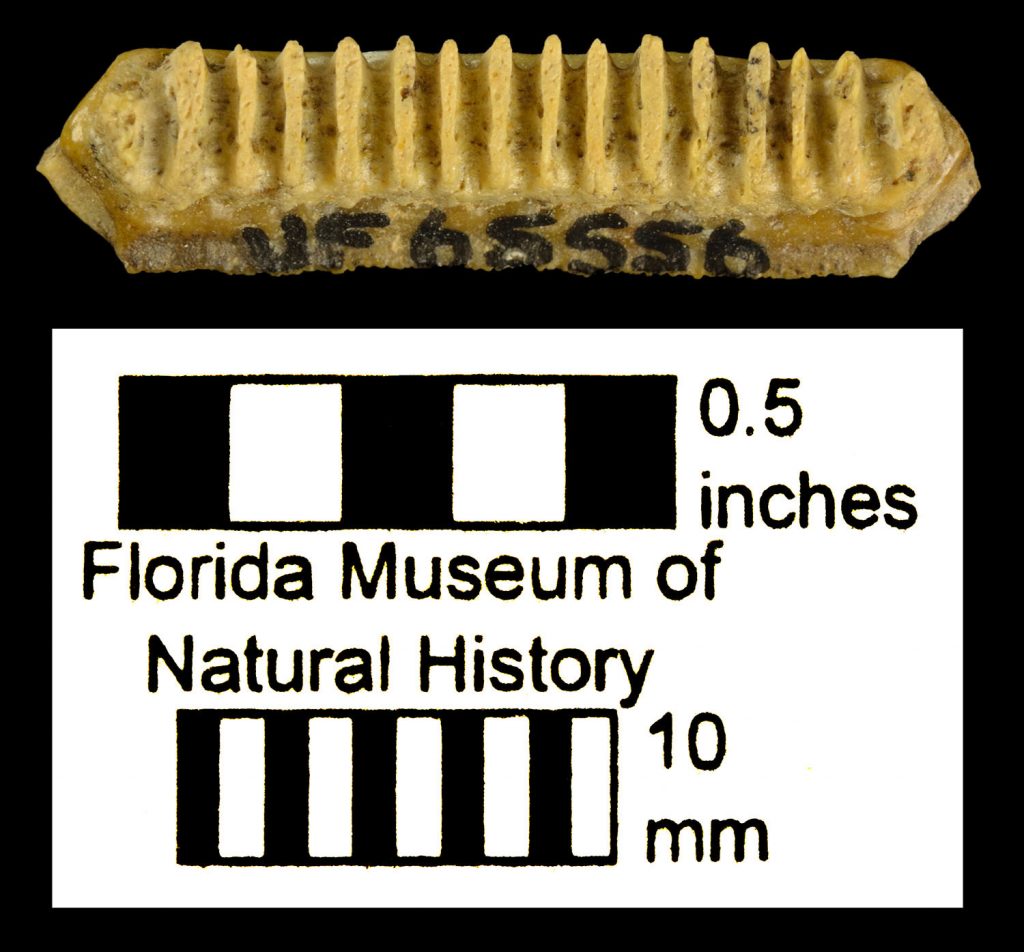Miocene Epoch
23 to 5 million years ago
The Miocene was a time of great change and marine life was diverse. In the oceans surrounding Florida, fossils of this amazing variety of aquatic life reveal a vibrant and changing network of habitats. From tiny mollusks to the enormous megalodon, Florida’s fossil record is rich with astounding specimens of early creatures. Explore some of the marine plants and animals of Florida’s Miocene:
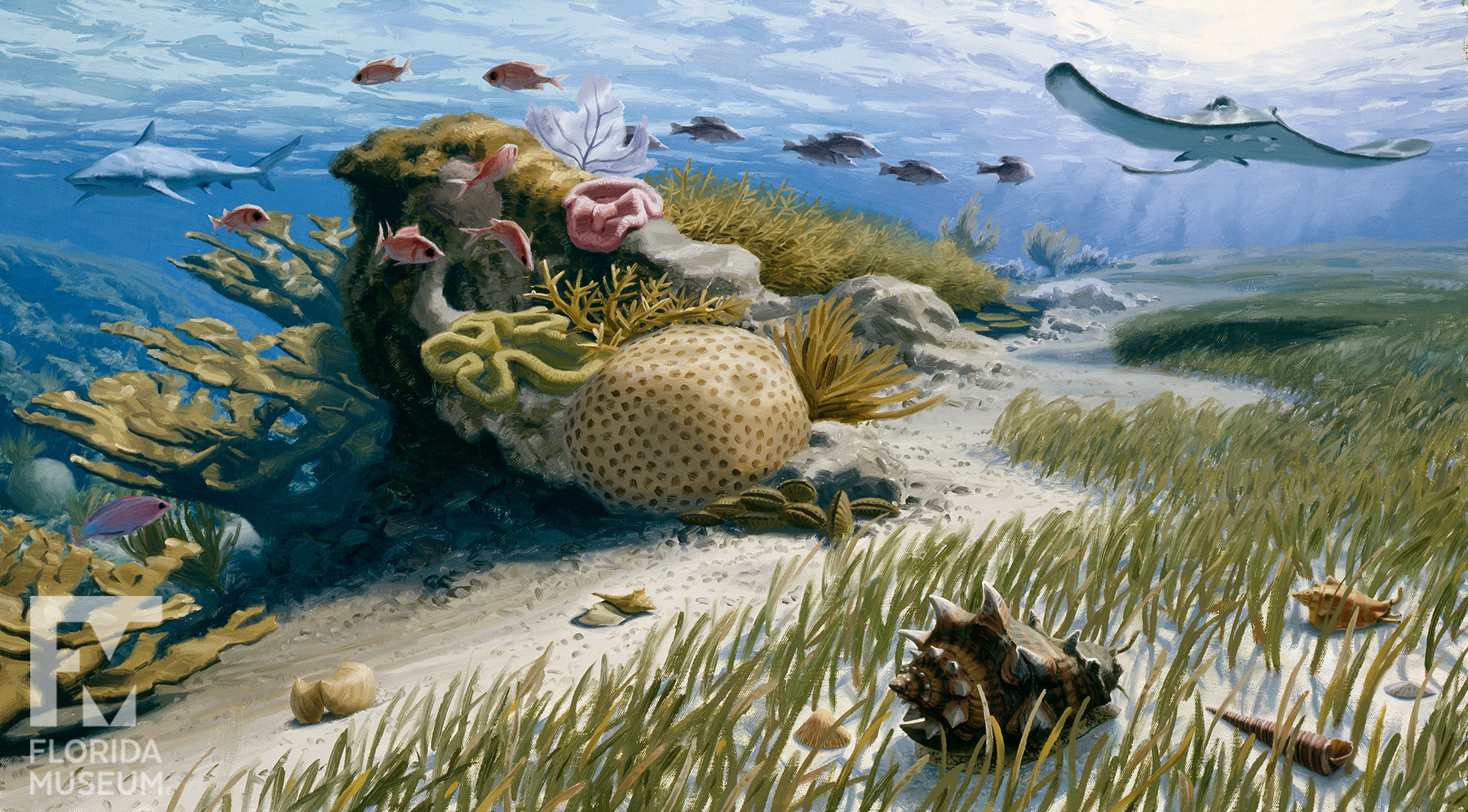
This painting was commissioned from artist Robert Barber for our Florida Fossils exhibit. Learn about the Miocene plants and animals represented:
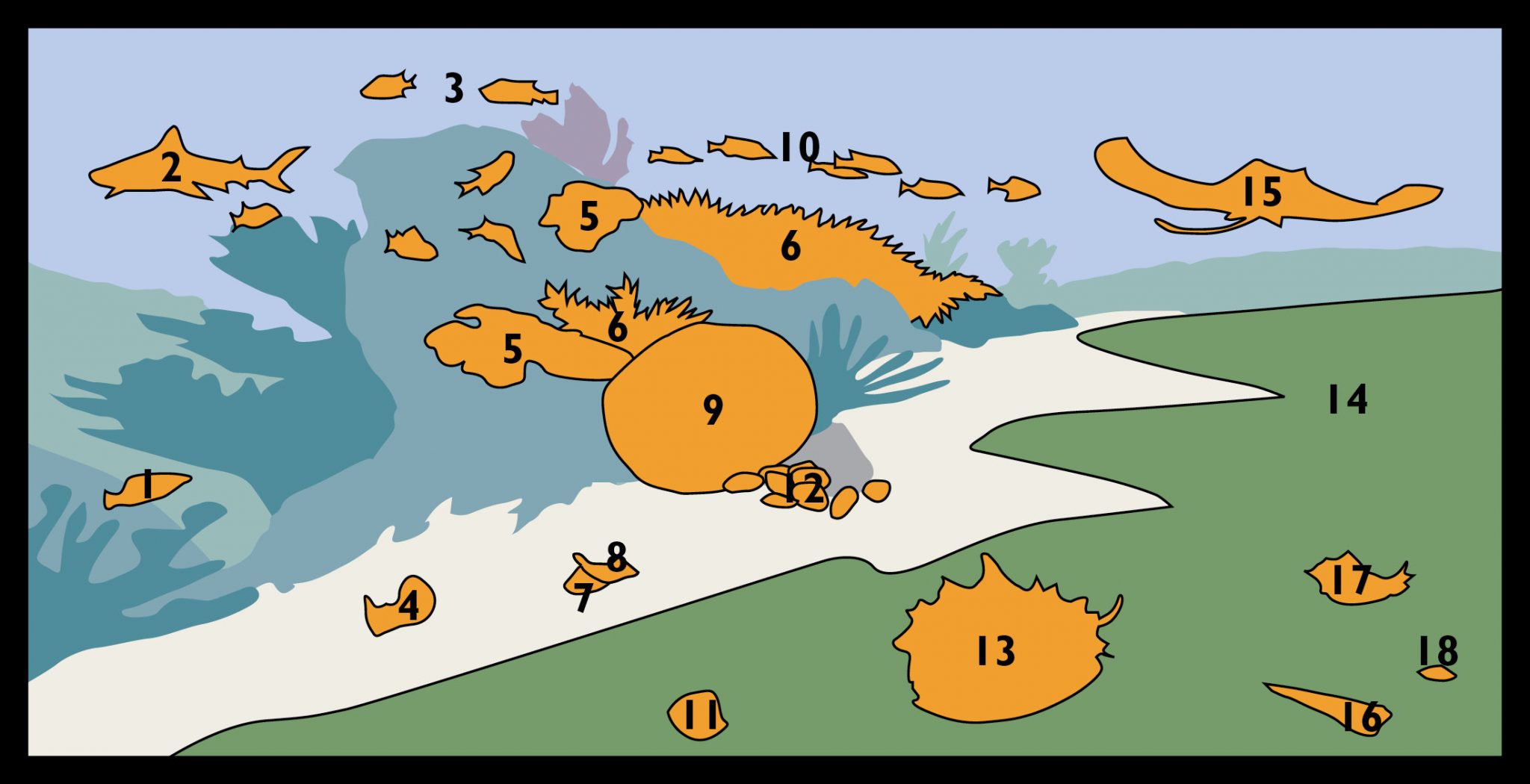
- Family Labridae (Wrasse)
- Carcharhinus leucas (bull shark)
- Squirrelfish
- Miltha chipolana (Chipola lucine)
- Trachyphyllia bilobata (open brain coral)
- Acropora species (staghorn coral)
- Orthaulax gabbi (Gabb’s conch)
- Siratus juliagardnerae (Julia Gardner’s murex)
- Siderastrea species (coral)
- Family Lutjanidae (Snapper)
- Dinocardium chipolanum (Chipola cockle)
- Chesapecten sayanus (Say’s Chesapeake scallop)
- Melongena sculpturata (sculptured crown conch)
- Sea grass
- Myliobatis species (eagle ray)
- Turritella subgrundifera (base-keeled turretsnail)
- Persististrombus aldrichi (Aldrich’s conch)
- Tellina strophia (twisted tellin)
Highlights

While megalodon is the famous extinct shark species, there are teeth of many ancient sharks in our Miocene fossil record. Some species are extinct, and some are still swimming in our oceans today. You might notice the wall of ancient sharks on display in the Florida Fossils exhibit, featuring species like this Miocene mako shark (Carcharodon hastalis, specimen # UF 118689).
Cartilage does not preserve well in the fossil record, and since shark are cartilaginous, most of what we know about them is from their teeth, which fossilize quite well. We also have been able to find and study shark vertebrae, which form growth rings somewhat like trees do. Scientists can learn information about an ancient shark’s life from these fossils. Read more about studying ancient sharks
Explore more fossils
Note: Because our scientific knowledge is always expanding, some information like species names may have changed since the Florida Fossils exhibit was opened in 2004. The information on this page has been updated and may differ from the exhibit panel.
More
Florida Fossils: Evolution of Life and Land exhibit
Florida Vertebrate Fossils online resource
